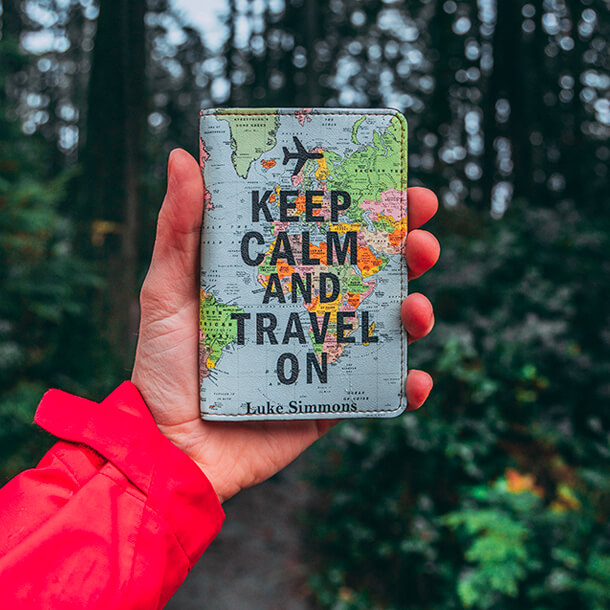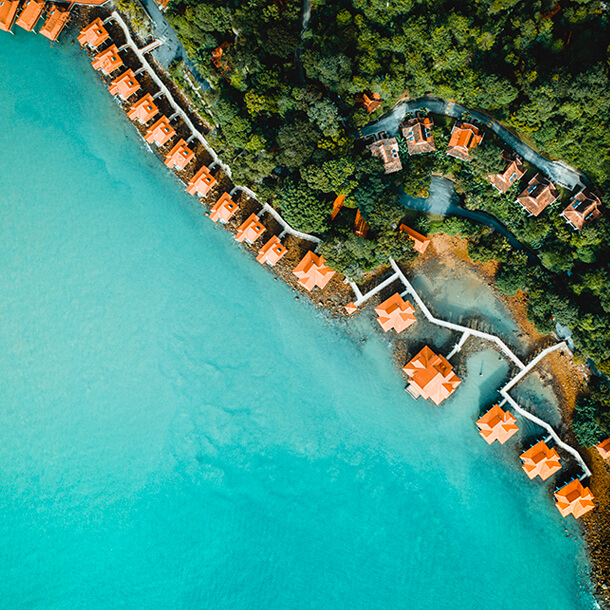How to Find The Best Places for Landscape Photography: Top Advice From a Professional Guide
Have you ever wondered how professional landscape photographers find the best scenes to shoot at exactly the perfect times?
There is really no secret to finding the best landscape photography locations; all it’s takes is research using the right tools, some patience, and a bit (okay, maybe more than a bit!) of luck.
While I can’t help you with your patience or luck, this guide was written to help you learn the best tools, resources, and tips for discovering your own unique photo spots.
How to Find the Best Landscape Photography Locations
If you got value from this article, please support my work by sharing it - or you can buy me a coffee.
I currently do NOT use affiliate links or receive compensation for products I recommend. I do this so my work stays honest and in line with my values. I only recommend gear that I personally use and believe is the best.
Google Earth

Google Earth is one of the most powerful tools to finding locations, and it is a software that should be part of every landscape photographer’s scouting workflow.
With its satellite imagery, 3D terrain maps and ground view features, Google Earth gives you the ability to plan routes and even take virtual tours of remote areas before you ever set foot in them.
Best of all? It’s free!
Using Google Earth’s Satellite Imagery
Google Earth's satellite imagery allows users to get a bird’s eye view of their desired location from the comfort of their own home.
This feature is especially useful when scouting out new places that may not have been explored yet or are difficult to access on foot.
3D Terrain Maps
The 3D terrain map feature gives photographers a more detailed look at the area they are planning to visit by providing information about elevation changes and landforms like rivers or cliffs which can help determine if it’s worth exploring further in person.
By zooming in on specific areas, photographers can brainstorm potential photo opportunities and see what the landscape would look like in person.
When combining Google Earth with mapping apps like Gaia GPS (see below), photographers can also use this feature to plan out hikes and backpacking trips by plotting points along trails or roads.
Ground View
The Ground View feature is a really incredible tool on Google Earth that lets you virtually walk around while getting an up close look at rivers, lakes, mountain ranges, and other natural landmarks that could make interesting subjects for amazing photos.
This feature makes it feel as if you are actually on the ground, walking around and looking at the landscape (or at least as close as it gets without actually being there!).
Topographic maps

Topographic maps (or topo maps) are some of the best tools for finding a great landscape photography location.
They provide detailed information about terrain features, elevation changes, and other important data that can help you find the ideal spot to capture your next shot.
Knowing how to read and use a topo map is probably one of the most underutilized skills by landscape photographers, as it can help you find new and interesting places to photograph away from the popular locations.
Topographic maps can be used in several ways when scouting out potential landscape photo locations:
- Identifying Areas with Interesting Terrain Features: By looking at topographical maps you can easily identify areas with interesting terrain features like hillsides or valleys that may make for good compositions in your photos. You’ll also be able to see if there are any bodies of water nearby which could add another element to your shots.
- Finding High Points: If you’re looking for sweeping views from high points then using topographical maps will help you locate those spots quickly and easily without having to physically explore every area yourself first hand!
- Checking Elevation Changes: When shooting landscapes it’s important to know how much elevation change there is between different points in order to get an idea of what kind of perspective shifts will occur when moving around during a shoot – this information can all be found on topographical maps!
Using Gaia GPS and CalTopo to Explore Topo Maps
Gaia GPS and CalTopo are two powerful web applications that allow you to access a large database of detailed topo maps and additional landscape data.
These apps provide much more detailed information about elevation changes which can be helpful when planning hikes or backpacking trips for capturing photos from different angles and perspectives not visible from ground level views only seen from aerial views on Google Earth.
They also have powerful layering tools which allow you to layer extremely valuable information on top of a topo map, such as snow depth, cell coverage, slope angles, and much more.
Additionally, they show trails and tracks that other people have uploaded which may lead to hidden gems and off-the-beaten path locations perfect for landscape photography opportunities.
Online articles & blogs

Reading online articles and blog posts written by experienced photographers can be incredibly helpful when trying to find new places for taking pictures of landscapes.
One of the best ways to do this is by reading through blogs and articles written by experienced photographers who have already scouted out great places for landscape photography.
Photographers often share stories online about their adventures along with details about where they took each shot—including GPS coordinates if available—so do a bit of research into blogs written by people who specialize in landscape photography near areas you plan on visiting soon (or someday).
These types of resources often include detailed descriptions of how they found geat spots along with tips on how best to approach them when shooting photographs there so take advantage of these valuable insights whenever possible.
Social media and photo sites

Social media apps and photo sharing websites can be great resources for finding landscape photography locations, especially when you are first starting out and looking for a popular spot to shoot photos.
They are great tools to explore iconic locations and beautiful places that you might want to plan your trip around.
It is important to mention here that while many people choose to post their photography locations online, I highly encourage you to not share your photo locations publicly.
When people on social platforms share previously undisturbed wilderness locations, it leads to the destruction and sometimes devastation to the environment.
Many remote wilderness areas and sensitive ecosystems cannot handle an influx of visitors and recreators, and keeping your photo locations private is an important part of practicing Leave No Trace.
With that being said, here are some resources that you can use to scout your own landscapes to photograph:
Flickr
With millions of images posted by photographers from around the world, Flickr is a place to easily find inspiration and get ideas on where to go on your next photo adventure.
When searching for potential locations on Flickr, start by typing in keywords related to the type of shot you want. For example, if you are looking for interesting landscapes to shoot near Moab, Utah, try searching “Moab, Utah” or “Moab landscapes”.
This will bring up photos taken in the Moab area that have been tagged with those terms. From there you can browse through different shots and see which ones appeal to you most.
You can also use advanced search options such as location tags and camera settings to narrow down your results even further.
Look closely at any EXIF data associated with each photo which can provide valuable information about shutter speed, aperture, ISO settings etc., all of which can help inform how best to set up your own camera when shooting a similar scene.
Instagram is another great tool to get location ideas when you are first getting into landscape photography.
Here are some tips to make the most of Instagram when searching for locations:
- Using hashtags - Hashtags are one of the best ways to search on Instagram and quickly find great landscape photography spots near you or around the world. To get started, simply type in hashtags related to what you’re looking for such as #landscapephotography or #naturephotography. This will bring up posts from other photographers who have taken photos at similar locations and provide valuable insight into potential shooting spots in the area.
- Researching photographers - Another way to use Instagram when scouting out new landscape photography locations is by researching individual photographers whose work inspires you. By clicking through their profile page, you can see all of their past posts and gain a better understanding of where they’ve been shooting recently (or even years ago).
- Following location accounts - There are also accounts dedicated solely to showcasing beautiful places around the world, making them great sources when searching for inspiring landscapes that would make excellent photo opportunities. Follow these accounts and keep an eye out for interesting places which could be worth exploring further.
- Connecting with other photographers - Messaging other photographers on social media platforms like Instagram is a great way to connect with people who share a similar photography passion. Depending on how secretive the photographer is about their photo locations, they might be able to give you locations or at least location ideas.
500px
500px is another huge database of photographs taken all over the world.
The best way to use it is to either type “landscape photography” or a more specific location such as “Grand Canyon” into the search bar.
This will result in tons of beautiful images and inspiration that will help you find interesting places to shoot.
Most photos don’t have the exact location (i.e. latitude and longitude coordinates), but they do provide general location details as well as details about the camera, lens, and settings that were used - all information that will help you out while scouting.
Another great feature of 500px is its community aspect which allows you to follow other photographers whose work you admire and get inspired by their shots.
Photography guidebooks
Landscape photography guide books can be extremely useful if you are visiting an area for the first time. Most of the books are written for popular photography areas like national parks and state parks.
These typically include detailed descriptions and tips on where to find the most interesting locations or views.
They also teach you the best times of year to visit and the right gear and techniques to employ.
Some may recommend specific trails that offer great vantage points, as well as the best times of day to hike them.
The best way to find the right guidebook is to do either a Google or Amazon search for “landscape photography guidebook” plus your desired destination.
A downside to using these books is that they often lead you to locations that have been heavily photographed before, but if this is not a problem for you, they can be great resources.
Photo tours & workshops

Many professional photographers offer photo tours and workshops that take you directly to the best locations.
With guided tours, you can learn from experienced photographers who know exactly where to go for the most stunning shots.
These trips usually include detailed itineraries, so you can get an idea of exactly where they went and how they got there before you go out on your own adventure.
This is definitely the more expensive way to go about finding locations, as tours and workshops typically cost hundreds if not thousands of dollars to attend.
You will, however, get the added benefit of learning from an experienced instructor and likely improve your photography skills on one of these trips.
Spend more time hiking and exploring

Some of my best photos were taken at locations I had not discovered in advance.
The truth is that much of my best work was captured by being at the right place at the right time.
The more time you spend outdoors, the more likely you are to find a great spot to capture the perfect shot - no major planning or extensive scouting required.
My favorite way to find new and unique landscapes to shoot is by spending a lot of time hiking and backpacking. This allows you to get off the beaten path and explore places that are often overlooked by other photographers.
While this involves more time and energy than the methods described above, it's often worth it to discover compositions and images not seen by many others.
Here are two of my best tips for capturing great photos this way:
- Save locations while out hiking or exploring - often times while out hiking I will find a really great composition that I want to shoot, but poor lighting makes the image fall flat. In this case, I will save GPS coordinates of the location and plan a time to return to the location when the light and weather are better. This way I can have a growing list of my favorite places and never run out of ideas of where to shoot in the future.
- Camp at a location you want to shoot - if it's feasible, one of the best ways to capture amazing images in to camp at or near places that you want to photograph. Then, you can spend more time waiting for the best light to hit. There is nothing better than waking up and getting out of your tent to shoot sunrise, or shooting sunset before climbing back into your tent to sleep. Look for areas that allow dispersed backcountry camping in order to do this effectively, and be sure to not break any rules regarding restricted camping areas.
Final Thoughts
Finding new and interesting compositions and locations for landscape photos can be one of the most difficult parts of the art.
Even when you are highly proficient in the technical skills needed for photography, finding new locations can seem like a never-ending search that never gets easier.
However, by utilizing the resources and tools outlined in this post, you can increase your chances of finding the perfect locations for your work.
What tools do you use to find new photo locations? Do you like to shoot popular and famous spots in national parks, or do you like to venture deep into the backcountry to find something unique? Send me an e-mail and let me know!
%20(3).png)










